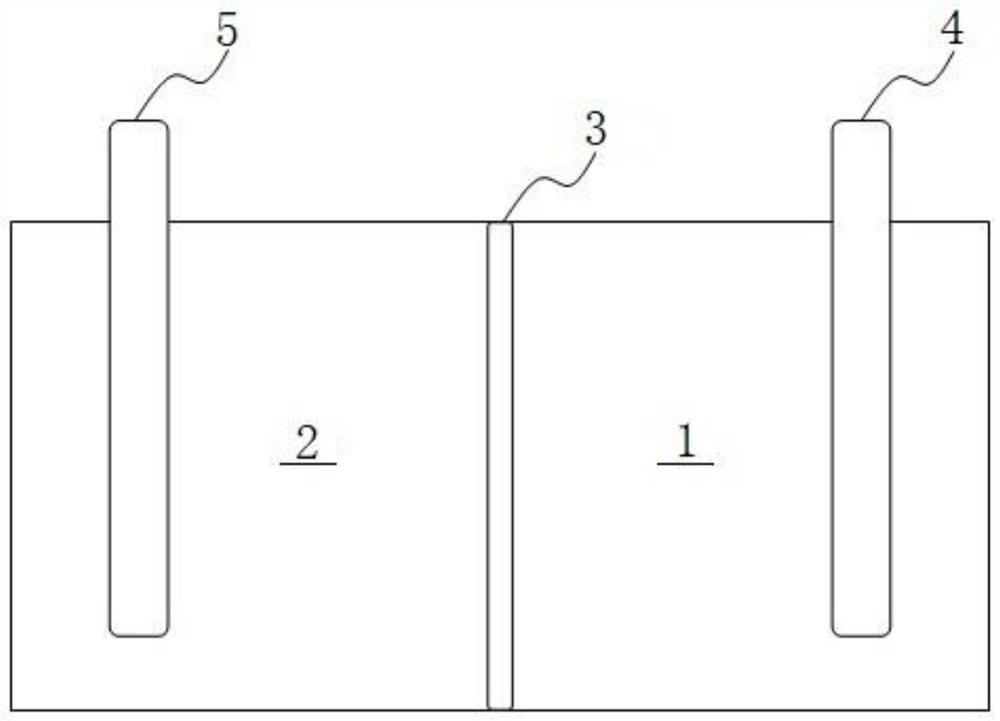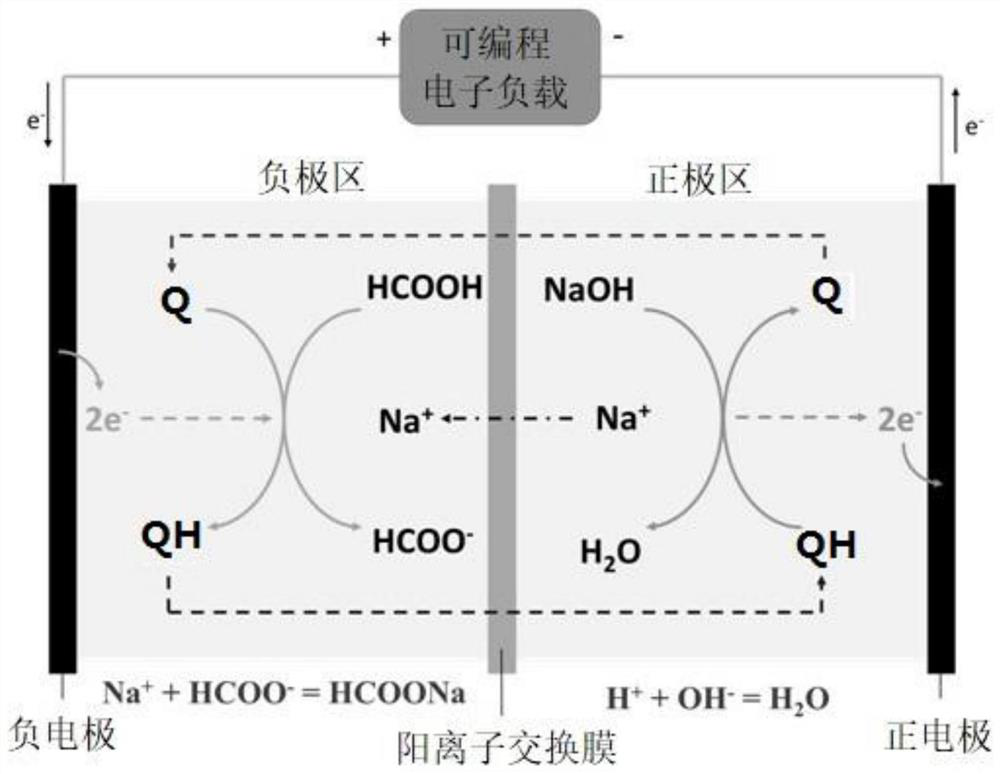Battery based on PCET reaction and energy storage method
A reaction and battery technology, applied in the field of electrochemical energy storage, can solve the problems of high-capacity battery system safety, unsuitable for micro and small energy storage systems, high requirements for element properties, etc., to improve power characteristics and capacity characteristics, operation High elasticity and avoid oxidative deactivation
- Summary
- Abstract
- Description
- Claims
- Application Information
AI Technical Summary
Problems solved by technology
Method used
Image
Examples
Embodiment 1
[0038] Embodiment 1, a kind of battery based on PCET reaction, store energy through the solution of sodium formate and sodium carbonate / sodium bicarbonate, see figure 1 , including the positive electrode region 1, the negative electrode region 2 and the cation exchange membrane 3 separating the positive electrode region 1 and the negative electrode region 2, where "separation" means that in the solution of the positive electrode region 1, any molecule or ion will move The solution to the negative electrode area 2, or vice versa, must pass through the cation exchange membrane 3, which only allows cations to pass through, but can prevent anions from passing through.
[0039] The structural formula is The compound QH is used as the positive electrode electrocatalyst, the compound QH is dissolved in the mixed solution of 1,2 dichloroethane and n-butanol to obtain an organic solution with a compound QH concentration of 0.1mol / L, and the concentration of 0.3 is added to the organic...
Embodiment 2
[0063] Embodiment two, adopt structural formula as The compound QH is used as the positive electrode electrocatalyst, the compound QH is dissolved in the mixed solution of 1,2 dichloroethane and n-butanol to obtain an organic solution with a compound QH concentration of 0.1mol / L, and the concentration of 0.3 is added to the organic solution mol / L 1-butyl-3-methylimidazolium hexafluorosulfate ionic liquid was used as a supporting electrolyte. Configure the trisodium aminotrimethylene phosphate solution with a concentration of 0.5mol / L as the first salt solution, adjust the pH of the first salt solution to below 3, and circulate it into the positive electrode of the electrolytic cell together with the organic solution dissolved in compound QH Area.
[0064] The structural formula is Compound Q is used as the negative electrode electrocatalyst. Compound Q is dissolved in a mixed solution of 1,2 dichloroethane and n-butanol to obtain an organic solution with a compound Q conce...
Embodiment 3
[0067] Embodiment three, adopt structural formula as The compound QH is used as the positive electrode electrocatalyst, and the structural formula is Q as an anode electrocatalyst.
[0068] Other processes are the same as in Example 2.
[0069] In this example, the charging time is 1 hour, and the current density is 200A / m 2 , The average charging voltage is 0.80V, the current efficiency is 96%, and the energy storage time is 1 week. The discharge time is 1 hour, the average discharge voltage is 0.60V, and the current density is 200A / m 2 , The current efficiency is 99%, and the energy conversion efficiency is 71.3%.
[0070] In the above examples, saline solution is used as the energy storage material, and its market price in China does not exceed US$900 per ton (the exchange rate in October 2019, the same below). The raw material of the traditional liquid flow vanadium battery is vanadium pentoxide, and its market price in China is now close to 21,000 US dollars per to...
PUM
| Property | Measurement | Unit |
|---|---|---|
| energy conversion efficiency | aaaaa | aaaaa |
| current efficiency | aaaaa | aaaaa |
| energy conversion efficiency | aaaaa | aaaaa |
Abstract
Description
Claims
Application Information
 Login to View More
Login to View More - R&D
- Intellectual Property
- Life Sciences
- Materials
- Tech Scout
- Unparalleled Data Quality
- Higher Quality Content
- 60% Fewer Hallucinations
Browse by: Latest US Patents, China's latest patents, Technical Efficacy Thesaurus, Application Domain, Technology Topic, Popular Technical Reports.
© 2025 PatSnap. All rights reserved.Legal|Privacy policy|Modern Slavery Act Transparency Statement|Sitemap|About US| Contact US: help@patsnap.com



